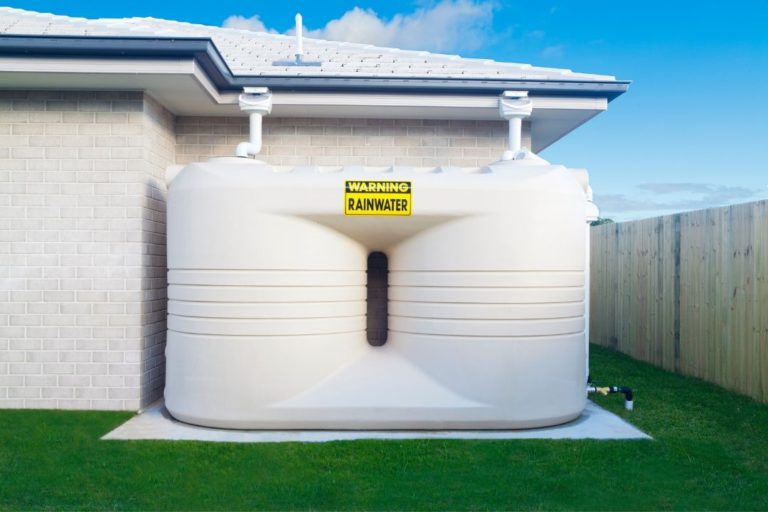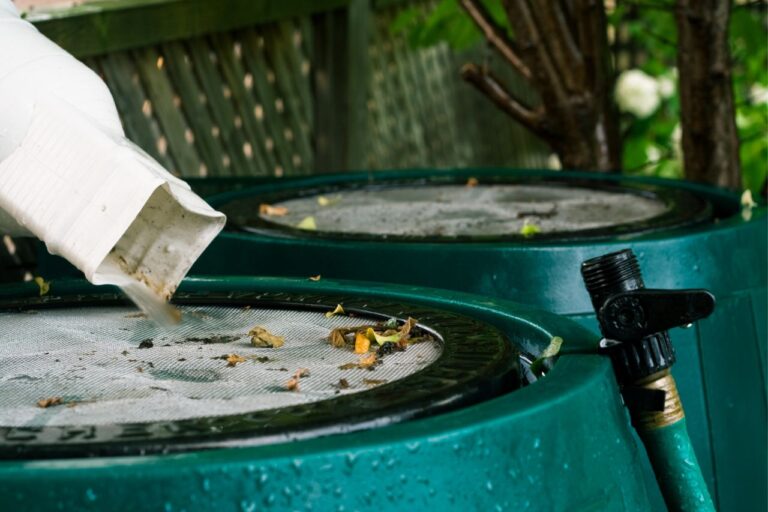How Do Rainwater Collection Systems Work?
Rainwater collection systems are becoming increasingly popular among homeowners and businesses alike. With the rise of sustainability and eco-friendliness, people are looking for ways to reduce their impact on the environment and save money on utilities. But where do you start? With so many different types of rainwater collection systems available, it can be overwhelming to know which one is right for you. That’s where this beginner’s guide comes in. In this article, we’ll cover the ABCs of rainwater collection systems, from the basics of how they work to the different types available and how to choose the right one for your needs. Whether you’re a seasoned eco-warrior or just starting to dip your toes into sustainable living, this guide will give you the knowledge and confidence to take the first step towards a more sustainable future. So let’s dive in and learn about the wonderful world of rainwater collection systems!
What is a rainwater collection system?
A rainwater collection system is a method of harvesting and storing rainwater for later use. It involves the collection of precipitation from rooftops, gutters, and other surfaces, which is then stored in a tank or cistern for future use. Rainwater collection systems can be as simple as a barrel with a spigot or as complex as a multi-tank system with filtration and pump systems. The collected water can be used for a variety of purposes, including watering plants, washing cars, flushing toilets, and even drinking with proper treatment.
Rainwater collection systems have been around for centuries, dating back to ancient civilizations such as the Greeks and Romans. In modern times, they have become increasingly popular due to concerns over water scarcity, rising water costs, and environmental impact. They are also a great way to reduce reliance on municipal water systems and provide a backup source of water in case of emergencies.
Why use a rainwater collection system?
There are many benefits to using a rainwater collection system. One of the most significant benefits is that it can help reduce your water bills. Instead of relying on municipal water systems, which can be expensive, you can use the collected rainwater for non-potable purposes such as watering plants and washing cars. This can save you hundreds of dollars per year on your water bill.
Another benefit is that rainwater is free of many contaminants found in tap water, such as chlorine and fluoride. This makes it ideal for use in gardens and for other outdoor purposes. Additionally, using rainwater for non-potable purposes helps reduce the demand on municipal water systems, which can help conserve water and reduce strain on infrastructure.
Rainwater collection systems are also environmentally friendly. By reducing reliance on municipal water systems, you are helping to conserve water and reduce the amount of energy required to treat and transport water to your home. Additionally, rainwater collection systems can help reduce stormwater runoff, which can cause erosion, flooding, and water pollution.
Types of rainwater collection systems
There are several different types of rainwater collection systems available, each with its own advantages and disadvantages. Some of the most common types include:
Barrel or Bucket Systems
Barrel or bucket systems are the simplest and most affordable type of rainwater collection system. They typically consist of a single barrel or bucket that is connected to a downspout. The collected water can be used for watering plants, washing cars, and other non-potable purposes. These systems are easy to install and maintain, but they have a limited storage capacity.
Underground Cisterns
Underground cisterns are a more advanced type of rainwater collection system. They are usually made of concrete or plastic and can hold a large amount of water. These systems are hidden underground, making them ideal for areas where space is limited. They also help regulate the temperature of the collected water, which can help prevent the growth of algae and bacteria. However, they can be expensive to install and may require professional help.
Above-ground Cisterns
Above-ground cisterns are similar to underground cisterns but are located above the ground. They can be made of a variety of materials, including plastic, fiberglass, and metal. These systems are easy to install and maintain, and they can hold a large amount of water. However, they are more visible than underground cisterns and may be less aesthetically pleasing.
Modular Systems
Modular systems are a flexible type of rainwater collection system that can be customized to meet your specific needs. They consist of multiple tanks that can be linked together to create a larger storage capacity. These systems are easy to install and can be expanded over time. However, they can be expensive and may require professional help.
Components of a rainwater collection system
Regardless of the type of rainwater collection system you choose, there are several components that are essential to its operation. These include:
Collection Surface
The collection surface is the area where rainwater is collected. This can include rooftops, gutters, and other surfaces. It is important to choose a collection surface that is clean and free of debris, as this can affect the quality of the collected water.
Gutters and Downspouts
Gutters and downspouts are used to channel rainwater from the collection surface to the storage tank. It is important to ensure that gutters and downspouts are properly installed and maintained to prevent clogs and leaks.
Storage Tank
The storage tank is where the collected rainwater is stored for later use. Tanks can be made of a variety of materials, including plastic, concrete, and metal. It is important to choose a tank that is the appropriate size for your needs and to ensure that it is properly sealed to prevent contamination.
Filtration System
A filtration system is used to remove debris and contaminants from the collected rainwater. This can include sediment filters, carbon filters, and UV sterilizers. The type of filtration system you choose will depend on the intended use of the collected water.
Pump System
A pump system is used to move the collected water from the storage tank to its intended use. This can include irrigation systems, toilets, and washing machines. It is important to choose a pump system that is properly sized for your needs.
Designing your rainwater collection system
Designing a rainwater collection system can be a complex process, but there are several factors to consider to ensure that your system is effective and efficient. These include:
Collection Surface Area
The collection surface area is the amount of space available for rainwater collection. This can include rooftops, driveways, and other surfaces. It is important to calculate the collection surface area to determine the appropriate size of the storage tank.
Water Demand
The water demand is the amount of water required for your intended use. This can include watering plants, flushing toilets, and washing cars. It is important to calculate your water demand to determine the appropriate size of the storage tank and pump system.
Climate
The climate in your area can affect the amount of rainwater available for collection. It is important to consider the average rainfall in your area and the seasonal variations to determine the appropriate size of the storage tank.
Local Regulations
Local regulations may govern the installation and use of rainwater collection systems in your area. It is important to research these regulations before designing and installing your system.
Installing your rainwater collection system
Installing a rainwater collection system can be a complex process, and it is important to follow all manufacturer instructions and local regulations. Some general tips for installation include:
1. Choose a location for the storage tank that is easily accessible and level.
2. Install gutters and downspouts if not already present.
3. Install a filtration system to remove debris and contaminants from the collected water.
4. Install a pump system to move the collected water from the storage tank to its intended use.
5. Ensure that all components are properly sealed and secured to prevent contamination and leaks.
Maintaining your rainwater collection system
Maintaining a rainwater collection system is important to ensure that it operates efficiently and effectively. Some general tips for maintenance include:
1. Regularly clean gutters and downspouts to prevent clogs.
2. Check the storage tank for leaks and contamination.
3. Inspect the filtration system and replace filters as needed.
4. Test the pump system regularly to ensure that it is functioning properly.
5. Consider adding a backup water source in case of emergencies.
Benefits of using a rainwater collection system
There are many benefits to using a rainwater collection system, including:
1. Reduced water bills
2. Free source of water for non-potable purposes
3. Environmental benefits
4. Backup source of water in case of emergencies
5. Reduced strain on municipal water systems
Potential drawbacks of using a rainwater collection system
While rainwater collection systems have many benefits, there are also some potential drawbacks to consider, including:
1. Initial cost of installation
2. Maintenance requirements
3. Limited storage capacity
4. Potential for contamination if not properly maintained
5. Local regulations and restrictions
Conclusion
Rainwater collection systems are a great way to reduce your impact on the environment and save money on utilities. With so many different types of systems available, it is important to consider your specific needs and local regulations before choosing and installing a system. With proper design, installation, and maintenance, a rainwater collection system can provide a reliable source of water for a variety of non-potable purposes. So why not take the first step towards a more sustainable future and explore the wonderful world of rainwater collection systems?






